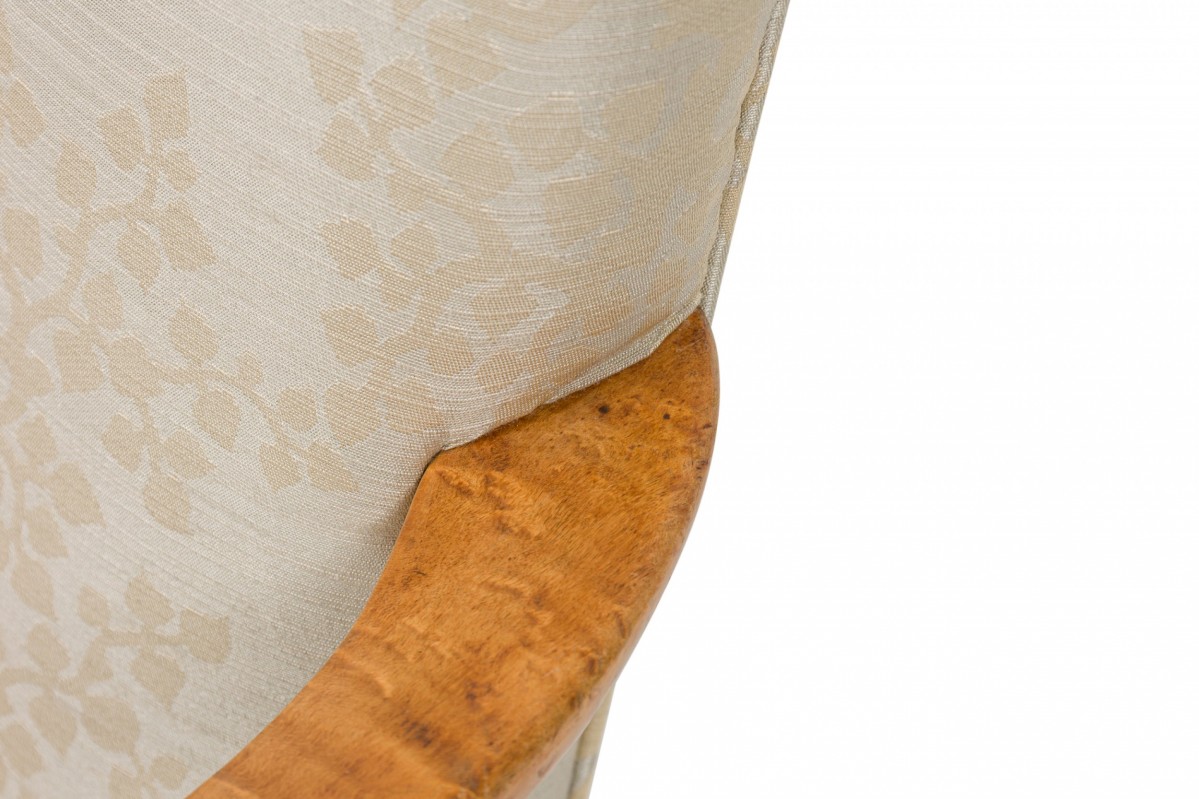X
{{ modalTitle }}
PLEASE FILL IN THE REQUIRED FIELDS.X
X
{{ modalTitle }}
Choose one of the options below.X
ITEM SUCCESSFULLY
ADDED TO PROJECT
French Victorian Carved Bird's Eye Maple Armchair with Taupe Floral Damask Upholstery
 French
French Victorian
Victorian Seating
Seating Armchairs
Armchairs
Newel Warehouse
32-00 Skillman Ave
Long Island City NY - 11101
 (212) 758-1970
(212) 758-1970
French Victorian Carved Bird's Eye Maple Armchair with Taupe Floral Damask Upholstery

Newel Warehouse
32-00 Skillman Ave
Long Island City NY - 11101
 (212) 758-1970
(212) 758-1970
 Seating
Seating Armchairs
ArmchairsVictorian
Period in English furniture during the reign of Queen Victoria 1837-1901. Consists of a resurrection of many previous periods and revival imitations including: Gothic, Tudor, Elizabethan, Rococo, and Neoclassic style. This period had a focus on dark woods, heavy fabrics, embellishment, engagement with newly developed imitation materials that were facilitated by the Industrial Revolution, and a tendency towards eclecticism.
Damask
A linen, cotton, rayon, or silk fabric with a reversible jacquard weave. Damasks are woven on a jacquard loom using predominantly monotone fibers and a combination of weaving techniques most commonly satin and twill variants creating a tone on tone pattern that is produced by the contrast of matte and reflective surfaces. Prior to the invention of the jacquard loom in the early 1800s, damasks were woven by hand and considered a luxury fabric, but the loom's ability to produce bulk yardage allowed for more widespread access to damask fabrics within middle-class households in the 19th Century.
Maple
A hardwood used for furniture-making and flooring, characterized by a close, light brown grain. Its grain pattern can vary based on variety. Though often straight, it can sometimes include small knots (in the case of birdseye maple) or flame shapes. Some varieties of maple are used to craft fine wooden instruments such as violins and cellos.
Victorian
Period in English furniture during the reign of Queen Victoria 1837-1901. Consists of a resurrection of many previous periods and revival imitations including: Gothic, Tudor, Elizabethan, Rococo, and Neoclassic style. This period had a focus on dark woods, heavy fabrics, embellishment, engagement with newly developed imitation materials that were facilitated by the Industrial Revolution, and a tendency towards eclecticism.
Damask
A linen, cotton, rayon, or silk fabric with a reversible jacquard weave. Damasks are woven on a jacquard loom using predominantly monotone fibers and a combination of weaving techniques most commonly satin and twill variants creating a tone on tone pattern that is produced by the contrast of matte and reflective surfaces. Prior to the invention of the jacquard loom in the early 1800s, damasks were woven by hand and considered a luxury fabric, but the loom's ability to produce bulk yardage allowed for more widespread access to damask fabrics within middle-class households in the 19th Century.
Maple
A hardwood used for furniture-making and flooring, characterized by a close, light brown grain. Its grain pattern can vary based on variety. Though often straight, it can sometimes include small knots (in the case of birdseye maple) or flame shapes. Some varieties of maple are used to craft fine wooden instruments such as violins and cellos.
Victorian
Period in English furniture during the reign of Queen Victoria 1837-1901. Consists of a resurrection of many previous periods and revival imitations including: Gothic, Tudor, Elizabethan, Rococo, and Neoclassic style. This period had a focus on dark woods, heavy fabrics, embellishment, engagement with newly developed imitation materials that were facilitated by the Industrial Revolution, and a tendency towards eclecticism.
Damask
A linen, cotton, rayon, or silk fabric with a reversible jacquard weave. Damasks are woven on a jacquard loom using predominantly monotone fibers and a combination of weaving techniques most commonly satin and twill variants creating a tone on tone pattern that is produced by the contrast of matte and reflective surfaces. Prior to the invention of the jacquard loom in the early 1800s, damasks were woven by hand and considered a luxury fabric, but the loom's ability to produce bulk yardage allowed for more widespread access to damask fabrics within middle-class households in the 19th Century.
Maple
A hardwood used for furniture-making and flooring, characterized by a close, light brown grain. Its grain pattern can vary based on variety. Though often straight, it can sometimes include small knots (in the case of birdseye maple) or flame shapes. Some varieties of maple are used to craft fine wooden instruments such as violins and cellos.


















